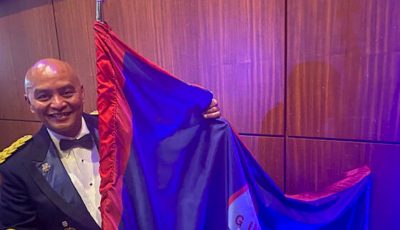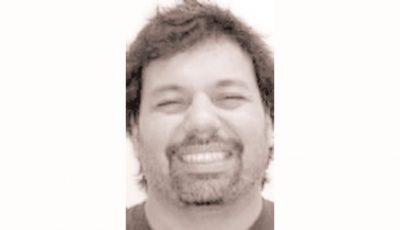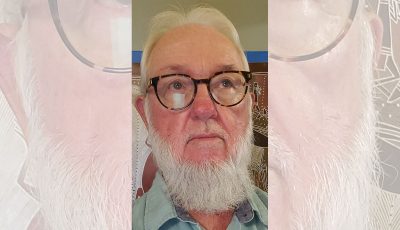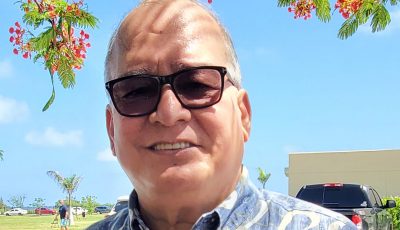Ruth Tighe, 1931-2012
I hold a picture of a lady lugging her oxygen tank etched in my mind. I first ran into her as a newcomer on island. She was a recognized maven of the press. I had not yet pretended that I could write! On my Mind was a rich throve of her wisdom liberally sprinkled with honesty and precision without hesitation or apology. She also did not mind sharing her mind over a cup of tea!
We met for lunch in Susupe shortly after I quit teaching at SVES in 2008 to attend to a cervical spondylosis that took me away from the classroom. Her pen was still feisty as ever and she did not mince her words when I got too casual with my grammar.
She was always “serious” in her writings as she was on anything she wrapped her mind around. It was that mind that we all ran into, with some seared, others chastened, and folks like me purified; she brought her mind to these islands by the time she already had 50 years of a lifetime.
That I should be thinking of her on her birthday 84 years ago attests to the lasting influence she had on other people’s lives, including mine. Through her example and reminders, we were not encouraged to think in a particular way, only that we bother to think at all. And not be sloppy about it, especially if we put down on paper the results of our ruminating.
I am always remiss to attend memorial services because of the “fake” nature of such events, with eulogies declared to high heavens on an inert body that would not care less. The CNMI Legislature was smart enough to pass a resolution in Ruth’s honor for her contribution to the Marianas community while she was still alive and alert to receive it (16th Legislature, 2010 HR 16-104).
I wrote a “eulogy” earlier to her memory on this page when she was still around to read about it.
In Ruth L. T. on my mind, I wrote: “The secret is how to die,” begins The Lost Symbol, the sequel to Robert Brown’s The Da Vinci Code. “Indeed, in a time when what passes for comfort is an escapist avoidance of reality, and the balm for struggle is to anesthetize the suffering and numb the pain, the issue of who is in charge of one’s dying has become a live issue in the hallowed battle ground of communal obedience and individual freedom. … Ruth L. Tighe continues to report on her health and her occasional need of oxygen, and though I do not run into her anymore, I hold a picture in my mind of a woman who approaches the one death she will ever struggle to die to, with tranquility and equanimity.”
It is in the same vein that I paused for my “memorial service” five years ago and every five years thereafter, this year, probably to hold one in public. The focus, of course, is not on my life, or that of Ruth, or anyone else except that of anyone living a life they’d hesitate not to memorialize. We neither write nor live for our own edification, nor call attention to it, save as somehow through the telling of the living of our lives, we manage to invite others to reflect on how they live theirs. We focus on ourselves so others can discover themselves in the reflection. In a sense, that’s how Ruth came across to me.
Simon Anholt of the Good Country Index fame has taken to rating 200-some countries that currently “behave” as entities, using internal (self satisfaction) and external (contribute to the welfare of the whole planet) categories, a veritable improvement over the two entities that Pope Alexander identified when he decreed in the Inter caetera Bull that the planet was going to be divided between Spain and Portugal, clarified by the two parties in the 1494 Treaty of Tordesillas.
The increase of categories from two to 200 in more than 400 years may be a little too slow for many who now deal with current computerized databases. But with the Obama watch (NSA pun intended) and $200 million going into “research” this year, and business-to-consumer transactions in the Internet to reach 450 billion per day in 2020 (conservative estimate), Wal-Mart now handling a million customer transactions every hour, decoding the human genome taking 10 years before can now be achieved in matter of days, and AT&T calling records at two trillion, we can perhaps get Simon to see if he can shift his advisory and tech-savvy to computerize 7.5 billion names on the planet this year, and analyze existing records by individuals (some will be more prominent than others), to come up with a “Good Human” index!
We need to distinguish our use of the words “selfish” and “selfhood,” with the first, as Anholt uses it, denoting an internal state of satisfaction, to “selfhood” as a state of authentic self-awareness relating to the facticity of one’s finitude (I’m on an 86-year-long journey), relationship to the society of birth, profession, contact, and the geography where one is domiciled, to the nature of one’s story of the whole shebang! The thing is, an index of this nature is currently feasible, and there is probably a smart and bright-eyed 6-year-old already starting to build it.
Knowing that Ruth Tighe existed in the planet is not the point. That we all do is. Thanks, Ruth!



























